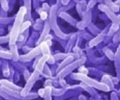A group scientists have recently helped the Communicable Diseases Centre (CDC) at Atlanta identify a rare strain of cholera, which wreaked havoc in
A group scientists have recently helped the Communicable Diseases Centre (CDC) at Atlanta identify a rare strain of cholera, which wreaked havoc in coastal US and Japan early this year. The new cholera pathogen, transmitted through sea food, has become a major cause of concern for scientists across the world.
The reason behind its spread through sea food was unknown and unexplained till Indians made the discovery. “We received calls from the US asking us to help them identify what was causing a new type of cholera and diarrhoea in coastal areas of the country. The germ was simultaneously active in coastal areas of Japan,” said director of National Institute of Cholera and Enteric Diseases (NICED) Sujit Kumar Bhattacharya.Samples were flown in to Kolkata. “It was identified by our scientists as vibrio parahaemolitica O3:K6, an environmental water borne pathogen,” Bhattacharya said. “We also could link this particular pathogen to an epidemic in 1998 in coastal Orissa,” he said, adding, “the pathogen generally attacks in the coastal region and comes from the environment.” The pathogen is prominent in India, Bangladesh, Japan, Korea Thailand and the US.









